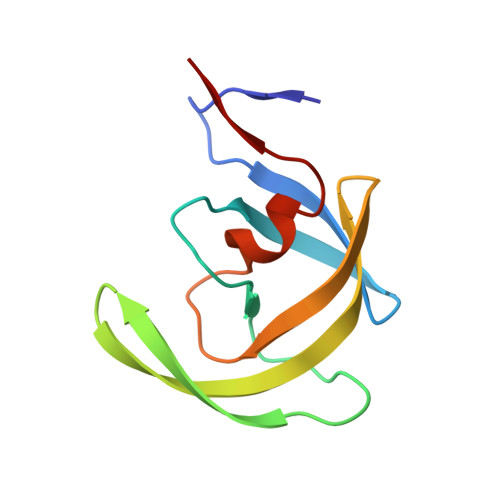Substrate envelope-designed potent HIV-1 protease inhibitors to avoid drug resistance.
Nalam, M.N., Ali, A., Reddy, G.S., Cao, H., Anjum, S.G., Altman, M.D., Yilmaz, N.K., Tidor, B., Rana, T.M., Schiffer, C.A.(2013) Chem Biol 20: 1116-1124
- PubMed: 24012370
- DOI: https://doi.org/10.1016/j.chembiol.2013.07.014
- Primary Citation of Related Structures:
3O99, 3O9A, 3O9B, 3O9C, 3O9D, 3O9E, 3O9F, 3O9G, 3O9H, 3O9I - PubMed Abstract:
The rapid evolution of HIV under selective drug pressure has led to multidrug resistant (MDR) strains that evade standard therapies. We designed highly potent HIV-1 protease inhibitors (PIs) using the substrate envelope model, which confines inhibitors within the consensus volume of natural substrates, providing inhibitors less susceptible to resistance because a mutation affecting such inhibitors will simultaneously affect viral substrate processing. The designed PIs share a common chemical scaffold but utilize various moieties that optimally fill the substrate envelope, as confirmed by crystal structures. The designed PIs retain robust binding to MDR protease variants and display exceptional antiviral potencies against different clades of HIV as well as a panel of 12 drug-resistant viral strains. The substrate envelope model proves to be a powerful strategy to develop potent and robust inhibitors that avoid drug resistance.
Organizational Affiliation:
Department of Biochemistry and Molecular Pharmacology, University of Massachusetts Medical School, Worcester, MA 01605, USA.

















